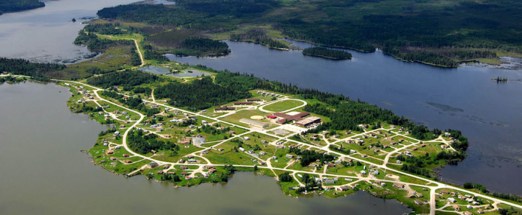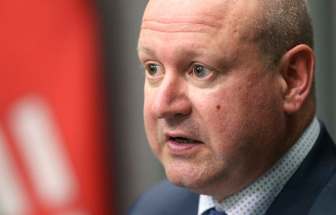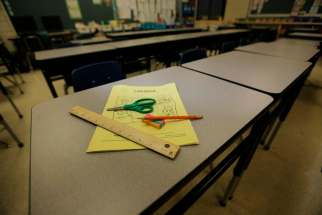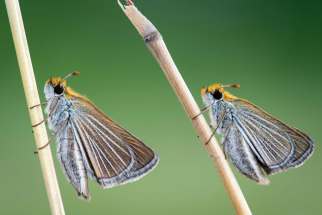Reading, writing, repeating: a year lost to COVID Some First Nations opt to turn clock back one grade this September
Read this article for free:
or
Already have an account? Log in here »
To continue reading, please subscribe:
Monthly Digital Subscription
$0 for the first 4 weeks*
- Enjoy unlimited reading on winnipegfreepress.com
- Read the E-Edition, our digital replica newspaper
- Access News Break, our award-winning app
- Play interactive puzzles
*No charge for 4 weeks then price increases to the regular rate of $19.00 plus GST every four weeks. Offer available to new and qualified returning subscribers only. Cancel any time.
Monthly Digital Subscription
$4.75/week*
- Enjoy unlimited reading on winnipegfreepress.com
- Read the E-Edition, our digital replica newspaper
- Access News Break, our award-winning app
- Play interactive puzzles
*Billed as $19 plus GST every four weeks. Cancel any time.
To continue reading, please subscribe:
Add Free Press access to your Brandon Sun subscription for only an additional
$1 for the first 4 weeks*
*Your next subscription payment will increase by $1.00 and you will be charged $16.99 plus GST for four weeks. After four weeks, your payment will increase to $23.99 plus GST every four weeks.
Read unlimited articles for free today:
or
Already have an account? Log in here »
Hey there, time traveller!
This article was published 05/07/2021 (1619 days ago), so information in it may no longer be current.
A handful of First Nations have already decided their students will have to re-do a grade next year in order to catch up with curriculum gaps, following repeated COVID-19 disruptions in 2020 and 2021.
Garden Hill First Nation was the first to confirm plans to have elementary and secondary pupils continue the grade they were enrolled in this year in September.
Shamattawa and Cross Lake First Nations have since approved similar blueprints for the 2021-22 school year.
“They enjoyed coming to school, whenever they came to school, but sometimes I had to close down at lunchtime and poof, because there was a case, my hands were tied.” – Lawrence Einarsson, principal of Kisemattawa Kiskinwahamakew Kamik School
“They enjoyed coming to school, whenever they came to school, but sometimes I had to close down at lunchtime and poof, because there was a case, my hands were tied. I had to look out for the safety of all the students in the school and the staff members,” said Lawrence Einarsson, principal of Kisemattawa Kiskinwahamakew Kamik School in Shamattawa.
Einarsson could not approve a single high school credit this year because of recurring closures and limited access to devices and quality internet.
The kindergarten to Grade 12 school, which has an enrolment of more than 400 pupils in a fly-in community approximately 750 kilometres northeast of Winnipeg, was shuttered for more than half of the total school days allotted for 2020-21. Even during the brief stints when the building was open for in-class learning, attendance was down by 50 per cent, according to the principal.
Einarsson said he plans to resume the hot breakfast program, hire more teachers to facilitate a return of extracurriculars, and launch both a mature student program and hot lunch initiative to convince students to return in September.
Family fears about sending kids to class have resulted in learning loss across the province, said Charles Cochrane, executive director of the Manitoba First Nations Education Resource Centre.
Deep rooted anxiety and distrust — owing to complex reasons, including the legacy of the residential school system and how Indigenous people have been historically mistreated during pandemic responses in Canada — are among the reasons for poor attendance rates.
Overcrowding only exacerbated the issue, since some leaders had to transform learning facilities into isolation hubs or lodging areas for military officials during severe outbreaks.
“A lot of communities are having issues on internet access and it’s very difficult to do a remote learning strategy with little or no connectivity to the internet,” added Cochrane, who works with federally funded First Nations schools to support leaders and programming.
“A lot of communities are having issues on internet access and it’s very difficult to do a remote learning strategy with little or no connectivity to the internet.” – Charles Cochrane, executive director of the Manitoba First Nations Education Resource Centre
While many students in the Manitoba capital did not have to think twice about joining a video call with their teachers and peers, unreliable internet in Garden Hill, Shamattawa and Cross Lake meant pupils often relied on homework packages.
“Our school was a wash. We tried remote learning, but because of our connectivity issues, it just didn’t work for our community. There’s challenges in terms of getting students the hardware to pull it off, so we went to the homework packages-type of learning. There was a bit of success, but not the way we had anticipated,” said Greg Halcrow, director of the Cross Lake Education Authority.
Unlike Garden Hill and Shamattawa — which will both require all students to repeat an entire academic year — Halcrow said his community plans to address content gaps by introducing a “dual-curriculum delivery system” next year.
A class of students who were in Grade 4 in 2020-21, for example, will pick up where they left off in the fall and focus heavily on the key curriculum outcomes related to literacy, numeracy and science for that level. Once the prerequisite lessons are complete, a teacher will pivot to focus on the content in the same core areas for the following grade.
“Half-way through the year, Grade 5 will kick in,” said Halcrow, noting that arts and physical education will be incorporated into the model, although perhaps not as fully as they usually are.
Since the pandemic started, the Manitoba First Nations Education Resource Centre has been providing schools with homework packages with land-based learning activities and lessons related to culture and language in Ojibwe, Cree, Dene, Dakota or “Island Lake dialect,” depending on the region, to patch academic gaps.
Over the summer, Cochrane will continue to work with education leaders in First Nations across Manitoba to come up with recovery learning strategies. No matter their approach, he will back local leaders’ decisions.
“Our school was a wash. We tried remote learning, but because of our connectivity issues, it just didn’t work for our community. There’s challenges in terms of getting students the hardware to pull it off, so we went to the homework packages-type of learning.” – Greg Halcrow
“I’m a believer that it’s not the end of the world,” Cochrane added. “Children are able to adapt and learn. Our students can get back to that level that they would be expected to be in. It will happen. It might just take a little bit.”
Learning loss will be a key subject during the centre’s annual Circle of Knowledge Conference in October 2021.
maggie.macintosh@freepress.mb.ca
Twitter: @macintoshmaggie

Maggie Macintosh reports on education for the Winnipeg Free Press. Funding for the Free Press education reporter comes from the Government of Canada through the Local Journalism Initiative.
Our newsroom depends on a growing audience of readers to power our journalism. If you are not a paid reader, please consider becoming a subscriber.
Our newsroom depends on its audience of readers to power our journalism. Thank you for your support.










